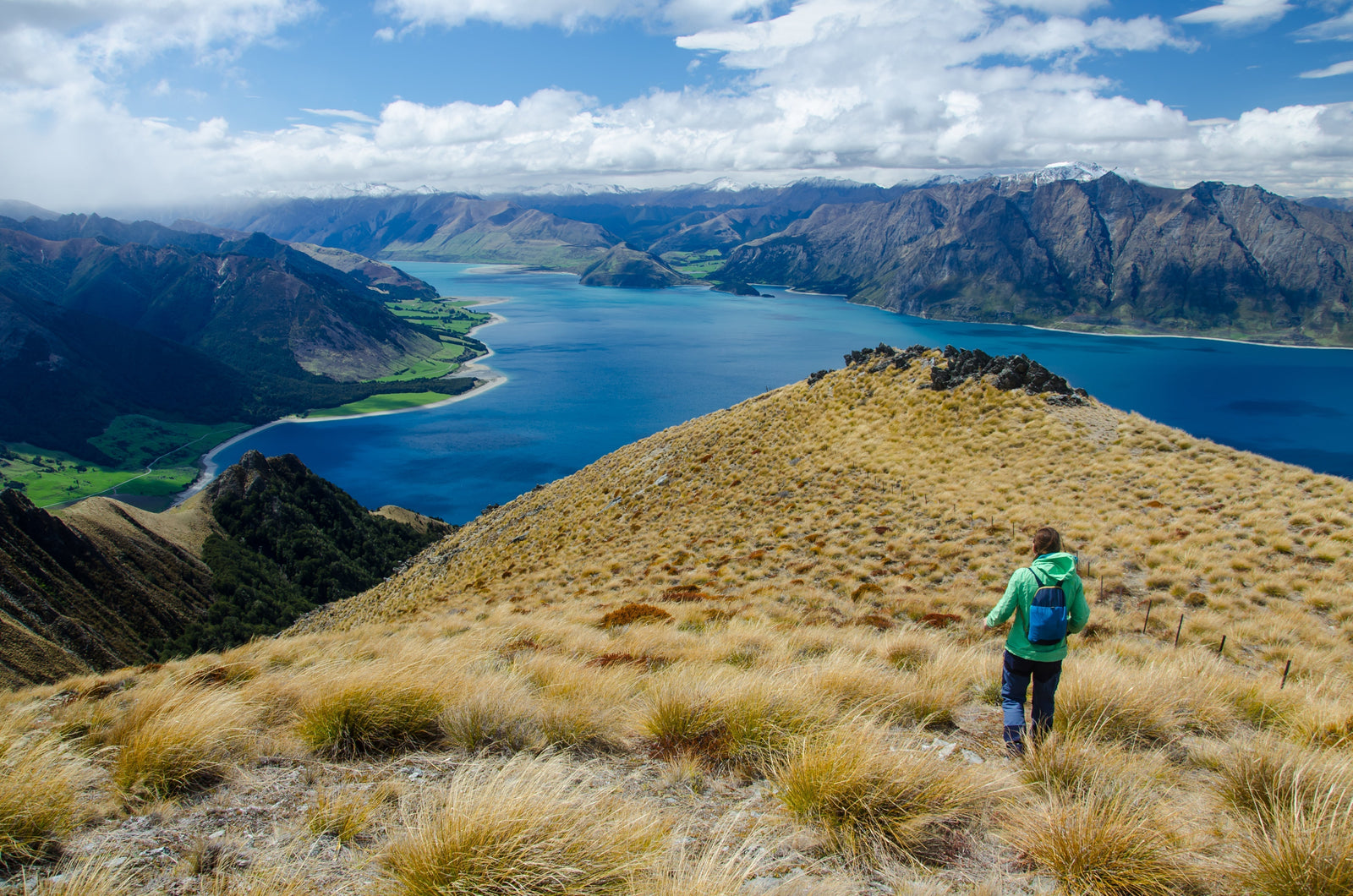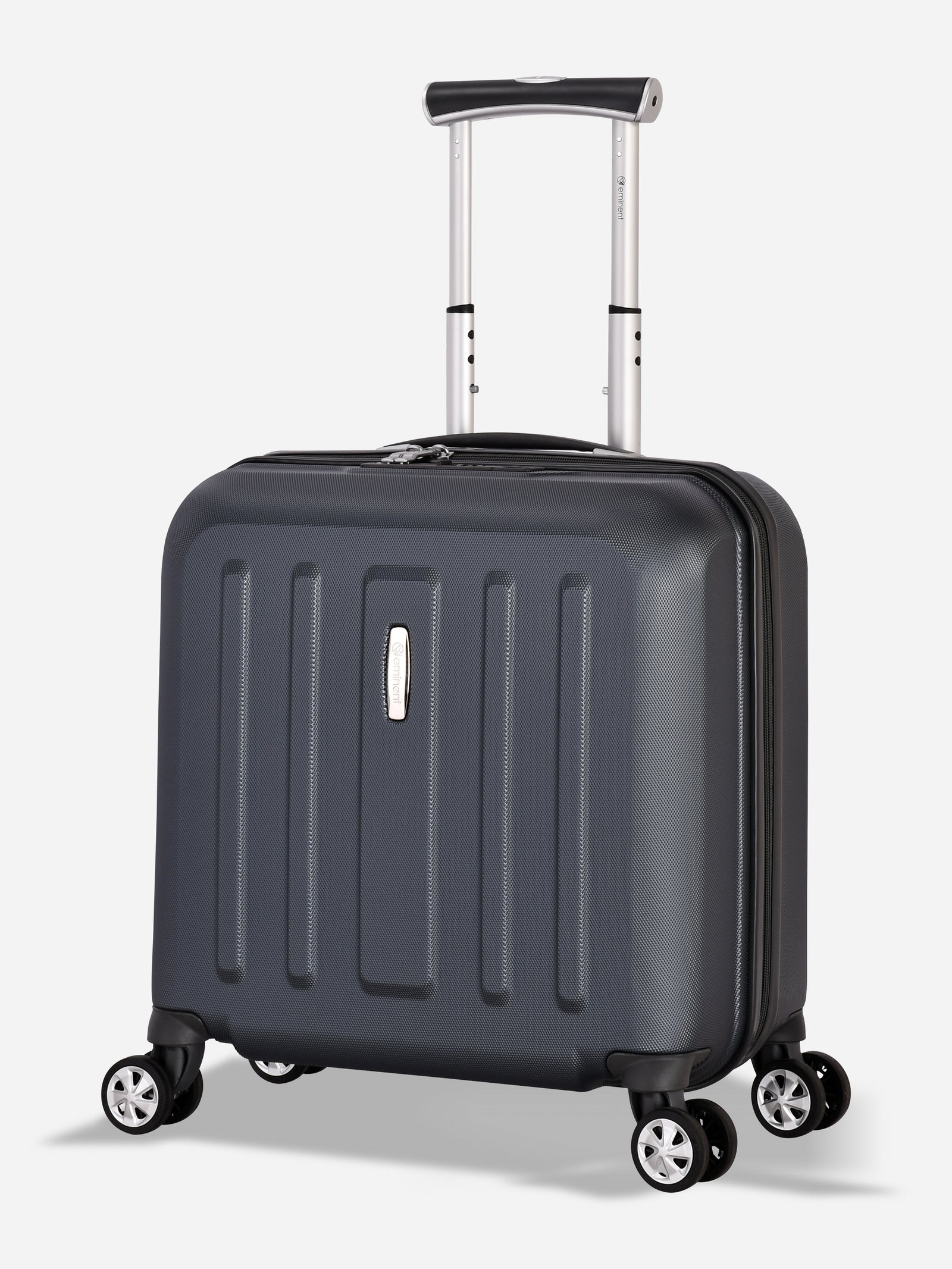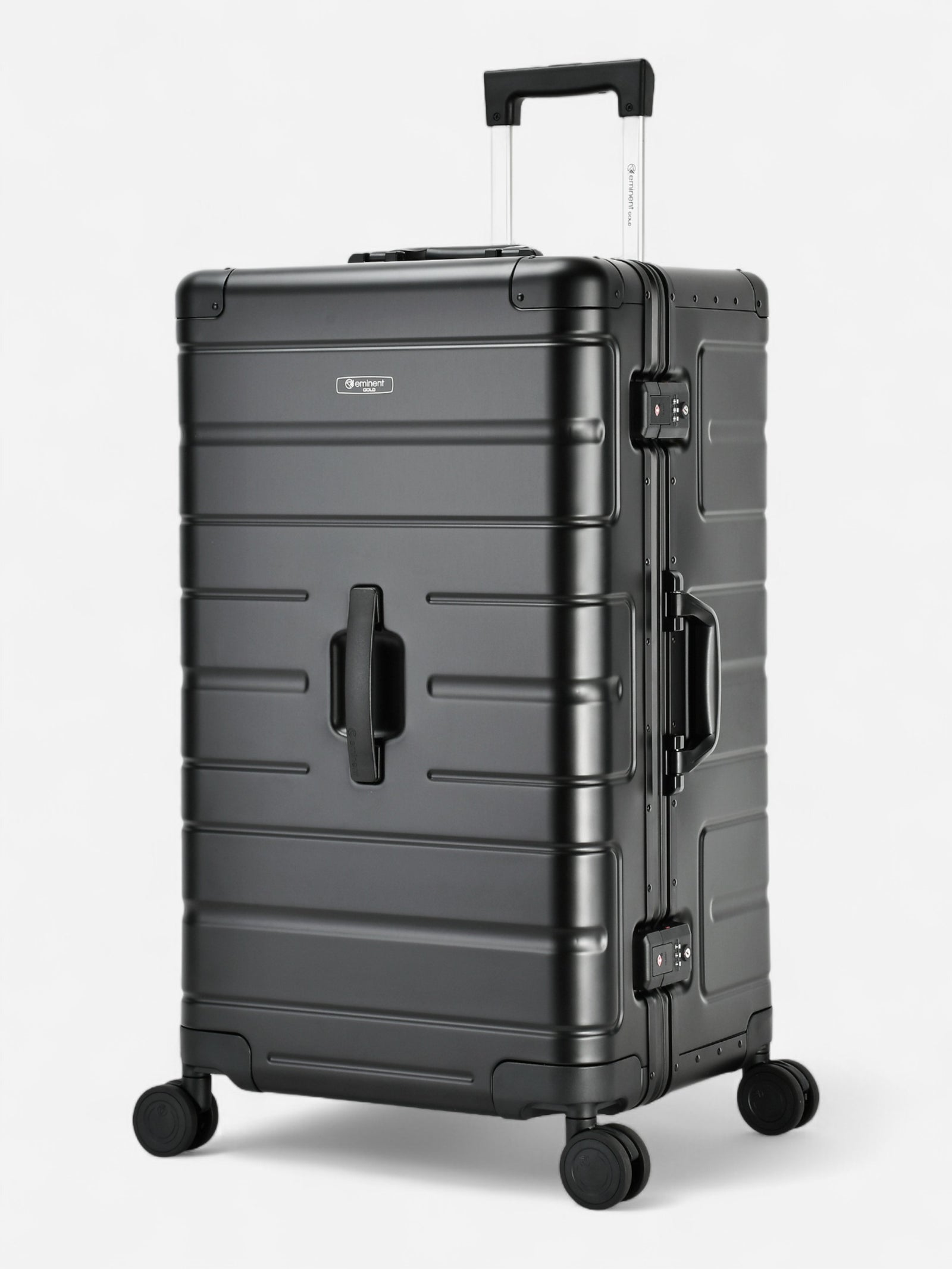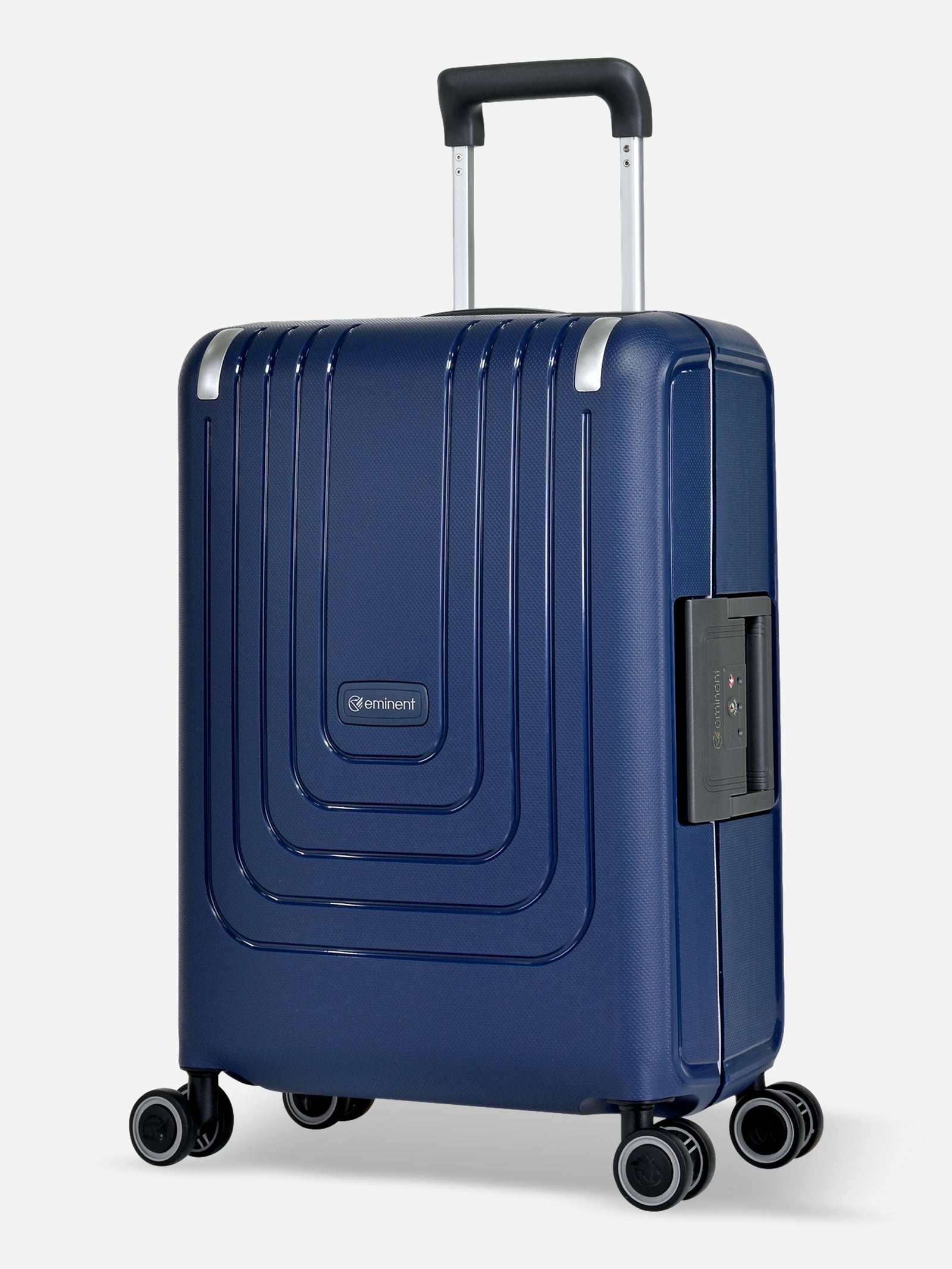Your Ultimate Packing Guide For Iceland

Traveling to Iceland is an adventure filled with breathtaking landscapes, unique geological features, and unpredictable weather. To ensure you have a comfortable and enjoyable trip, it's essential to pack wisely. This guide provides a comprehensive organizing checklist tailored for each season, along with specific clothing and gear recommendations.
In short: Pack warm layers, waterproof clothing, sturdy hiking boots, and a camera to capture the stunning landscapes of Iceland. Don't forget essentials like gloves, hats, and sunglasses. Be prepared for unpredictable weather and enjoy your adventure!
ESSENTIAL CLOTHING
The right clothing is essential to stay comfortable in the country's unpredictable and often harsh weather conditions. Layering is key to adapting to sudden changes in temperature, wind, and rain. Start with a moisture-wicking base layer made from merino wool or synthetic materials to keep sweat off your skin. Avoid cotton, as it traps moisture and can make you colder.
For insulation, pack mid-layers such as fleece or down jackets to retain warmth. These can be easily adjusted depending on whether the temperature rises or falls. Your outer layer should be both waterproof and windproof to protect against frequent rain, snow, and strong winds. A high-quality rain jacket and pants are crucial for outdoor adventures like hiking or glacier visits.
Footwear is equally important. Invest in sturdy, waterproof hiking boots with good grip to handle Iceland’s diverse terrains, including rocky paths, icy trails, and muddy areas. Also, pack warm wool socks, gloves, a beanie, and a scarf to protect against windchill.
Even in summer, it’s wise to pack a few warm layers, as temperatures can drop rapidly in the evening or at higher altitudes. By bringing versatile, weather-resistant clothing, you'll be ready for any adventure Iceland has to offer!
GEAR RECOMMENDATIONS
When planning for Iceland, it's crucial to have the right gear to handle the diverse weather conditions. Here are some essential items:
-
Backpack: A 30L lightweight hiking backpack for day trips, offering enough space for essentials like layers, snacks, and water.
-
Water Bottle: A refillable water bottle, as Icelandic tap water is safe, pure, and delicious.
-
First Aid Kit: Basic first aid supplies to handle minor emergencies, including bandages, antiseptic wipes, and pain relievers.
Shop our Collection
CLOTHING FOR OUTDOOR ADVENTURES
When exploring Iceland's breathtaking landscapes, it's crucial to dress appropriately for the elements. Layers are your best friend here. Start with a moisture-wicking base layer to keep sweat away from your skin, followed by an insulating middle layer like fleece or wool to retain warmth. Your outermost layer should be windproof and waterproof to protect you from the region's unpredictable weather. A high-quality rain jacket and pants are indispensable since rain or snow can appear suddenly. Don't forget sturdy, waterproof hiking boots with excellent grip, as Iceland’s terrain can range from rocky lava fields to slippery glacier surfaces.
For head and hands, bring a warm beanie and gloves—ideally ones that allow for touchscreen use, so you can capture photos without freezing your fingers. If you plan on visiting glaciers or volcanoes, you may also need crampons and trekking poles. Sunglasses and sunscreen are also important, as the reflection from ice and snow can be intense. By layering strategically, you’ll stay comfortable and ready for anything Iceland’s wild landscapes throw your way.
WHEN IT´S WARM OUTSIDE
Soaking in Iceland’s iconic hot springs, like the Blue Lagoon or the Secret Lagoon, is a must, but dressing (or undressing) for the occasion requires a little preparation. First and foremost, pack a high-quality swimsuit that won’t lose its shape or fade after exposure to mineral-rich waters. Some hot springs, such as natural geothermal pools, have rough or rocky surroundings, so water shoes can be useful for protecting your feet.
A quick-dry microfiber towel is highly recommended since it dries faster than traditional cotton towels and takes up less space in your bag. Many hot springs have showers that visitors are required to use before entering the water, so bring travel-sized toiletries such as shampoo and body wash, especially those formulated to handle mineral deposits. If you have long hair, conditioner can help prevent it from drying out due to the silica and sulfur in the water.
For post-soak comfort, bring a warm, cozy outfit, as stepping out of a hot spring into the cool Icelandic air can be a shock to your system. A fluffy hoodie, thermal leggings, and a pair of soft socks will make the transition much easier.
TECH GEAR ESSENTIALS FOR YOUR TRIP
Capturing Iceland's surreal beauty often requires reliable tech gear, but it’s equally important to stay prepared for the rugged conditions. A durable camera or smartphone with an excellent camera is a must, as you'll want to snap shots of glaciers, waterfalls, and the northern lights. If photography is a major focus, consider bringing a lightweight tripod for stable shots, especially in low light. A wide-angle lens can also help capture Iceland's vast landscapes.
Don’t forget to pack enough storage, either through high-capacity memory cards or portable storage drives. Iceland’s cold temperatures can quickly drain batteries, so bring multiple spare batteries and a power bank for on-the-go charging.
For those who plan on driving or hiking to remote areas, a GPS device can be a lifesaver, as cellular service can be spotty in certain regions. Waterproof phone cases and protective gear for cameras are also smart additions, considering Iceland’s frequent rain and snow. Lastly, a universal power adapter and surge protector will ensure you can charge your devices regardless of Iceland’s socket standards and power surges.
TOILETRIES TO PACK FOR ANY SEASON
Your toiletry bag should cover all the essentials while keeping Iceland’s climate and amenities in mind. Since geothermal pools and hot springs are a highlight of many trips, pack a clarifying shampoo to prevent mineral buildup in your hair. A hydrating moisturizer is equally important, as Iceland’s cold, dry air can be tough on your skin. Lip balm with SPF will protect your lips from chapping, especially when spending time near glaciers or in windy conditions.
Travel-sized versions of your daily necessities—such as toothpaste, deodorant, and body wash—are ideal for saving space in your luggage. Iceland’s tap water is incredibly clean, so bringing a toothbrush and dental floss is all you’ll need for oral hygiene. If you wear contacts, make sure to have backup pairs and a good supply of lens solution, as you may not find your specific brand in Iceland’s smaller stores.
Finally, don’t forget pain relievers, any prescription medications, and basic first aid supplies. Many of these items can be purchased in Iceland, but they may be more expensive or harder to find in rural areas. By preparing a well-rounded toiletry kit, you’ll stay fresh and comfortable throughout your adventure.
IMPORTANT TRAVEL DOCUMENTS AND STAYING ORGANIZED
Proper organization and having all necessary documents are crucial for a smooth trip to Iceland. Start by ensuring your passport is valid for at least six months beyond your travel dates. It’s also a good idea to carry both digital and physical copies of your passport, travel insurance, and flight itinerary. If you plan on renting a car, you’ll need a valid driver’s license and possibly an international driving permit.
Travel insurance is highly recommended, especially due to Iceland’s remote regions and unpredictable weather. Save digital copies of insurance details, hotel reservations, and tour confirmations on your phone, and back them up on cloud storage for easy access.
Use a travel wallet or organizer to store your documents in one place. This can include boarding passes, currency, credit cards, and emergency contact information. Iceland is largely cashless, but having some local currency (Icelandic króna) is useful for rural areas.
Finally, consider downloading useful apps for navigation, weather updates, and offline maps. Being organized with your travel documents and digital resources will reduce stress and allow you to focus on enjoying your Icelandic adventure.
SAFETY ESSENTIALS FOR A SECURE TRIP
Although Iceland is considered one of the safest countries in the world, taking precautions with safety and security items is still important. Begin by packing a small but well-stocked first aid kit. It should include adhesive bandages, antiseptic wipes, pain relievers, and blister pads, especially for outdoor excursions. If you plan on hiking or driving in remote areas, include additional items like an emergency whistle and a flashlight.
For personal security, a money belt or anti-theft travel bag can help protect your valuables. These are particularly useful when visiting crowded areas, such as Reykjavik or tourist hotspots like the Blue Lagoon. It’s also wise to use TSA-approved locks for your luggage to deter theft during air travel.
Another must-have is a backup power bank. Iceland's rugged landscapes can mean long periods without access to outlets, and a fully charged phone is critical for communication, navigation, and emergencies. If you're renting a car, ensure you have a physical map in case of poor cell service in remote areas.
Finally, make sure your travel insurance covers accidents, medical emergencies, and trip cancellations. By preparing for safety and security, you'll minimize risks and enjoy your adventure with peace of mind.
ENTERTAINMENT TIPS FOR AIRPLANE AND TRAVEL TIME
Long flights to Iceland, particularly for travelers coming from North America or further, can feel tedious without proper entertainment. To pass the time, download your favorite movies, TV shows, or podcasts to your device ahead of time. Icelandair, for example, may not offer in-flight entertainment on all routes, so having offline content ready is a smart move. Noise-canceling headphones or earplugs are also great to block out background noise and enhance your experience.
For readers, an e-reader or tablet saves space compared to carrying physical books. Load it with novels, travel guides, or even Icelandic folklore to get into the spirit of your trip. If you prefer traditional paperbacks, select a lightweight option.
Interactive entertainment can also help break up the flight. Download travel games or puzzles, especially if you're traveling with children. For solo travelers, journaling your travel goals and itinerary ideas can be both productive and relaxing.
Don't forget power solutions. A fully charged power bank and charging cables are essential to keep your devices running. Snacks, a neck pillow, and a water bottle will also keep you comfortable and energized during your flight. With the right preparation, travel time can be both entertaining and enjoyable.
MUST-HAVE ITEMS FOR YOUR ADVENTURE
Embarking on an Icelandic adventure requires packing strategically to handle the country’s unpredictable weather and rugged landscapes. Certain essentials will make your experience smoother, no matter the activities on your itinerary. First and foremost, a reliable, waterproof daypack is crucial. It should be large enough to carry essentials such as snacks, water, extra layers, and tech gear. Iceland's ever-changing weather means you should always pack a windproof and waterproof jacket, even during summer. Similarly, a warm hat, gloves, and scarf are must-haves, as windchill can be intense, especially near waterfalls and glaciers.
Since hydration is important, bring a sturdy, reusable water bottle. Iceland’s tap water is among the cleanest in the world, so you can refill your bottle as needed. For outdoor adventures, a travel-size first aid kit is essential in case of minor scrapes or blisters. Snacks like trail mix or protein bars can also be a lifesaver during long excursions or road trips where restaurants may be scarce.
A good pair of sunglasses and sunscreen are vital—even on cloudy days—since UV rays reflect strongly off glaciers and snow. Other useful gear includes a portable phone charger, a multi-tool for emergencies, and an eye mask for summer trips when the midnight sun can interfere with sleep. With these essentials on hand, you’ll be well-prepared to enjoy Iceland’s awe-inspiring landscapes without any hiccups.
SEASONAL ORGANIZING CHECKLISTS
Iceland’s seasons can drastically influence your needs, so it's important to prepare with the right clothing and gear to handle the varying weather conditions throughout the year.
WINTER (DECEMBER - FEBRUARY)
-
Warm base layers (merino wool recommended)
-
Insulated waterproof jacket
-
Waterproof pants
-
Fleece or down jacket
-
Warm hat, gloves, and scarf
-
Sturdy waterproof boots with good grip
-
Wool socks (avoid cotton)
-
Swimsuit (for hot springs)
-
Daypack (30L recommended for hikes)
SPRING (MARCH - MAY)
-
Layered clothing (t-shirts, long-sleeve shirts, light sweaters)
-
Waterproof jacket and pants
-
Lightweight fleece or down jacket
-
Comfortable hiking shoes
-
Wool socks
-
Sun protection (sunglasses, sunscreen)
-
Refillable water bottle
-
Hat and buff for wind protection
SUMMER (JUNE - AUGUST)
-
Lightweight breathable clothing
-
Waterproof jacket (for sudden rain)
-
Comfortable hiking shoes or sandals
-
Swimsuit (for hot springs)
-
Sun protection (sunglasses, sunscreen)
-
Lightweight daypack
-
Insect repellent (for some areas)
AUTUMN (SEPTEMBER - NOVEMBER)
-
Warm base layers (merino wool recommended)
-
Insulated waterproof jacket
-
Waterproof pants
-
Fleece or down jacket
-
Sturdy waterproof boots
-
Wool socks
-
Hat, gloves, and scarf
-
Daypack for hikes
ORGANIZING TIPS AND TRICKS
Organizing for Iceland requires a thoughtful approach due to its ever-changing and often unpredictable weather. Here are some tips to help you stay prepared and comfortable on your adventure.
-
Master the Art of Layering: Layers are key to adapting quickly to changing temperatures and conditions. Start with moisture-wicking base layers, add an insulating middle layer, and top it off with a waterproof, windproof outer shell.
-
Prioritize Waterproof Gear: Rain, snow, and mist from waterfalls are common in Iceland. Invest in high-quality waterproof jackets, pants, and hiking boots to keep dry and comfortable.
-
Use Packing Cubes: Organize your gear with cubes. They help save space and keep your clothing accessible, especially when switching outfits for different weather conditions.
-
Pack Quick-Dry Items: From towels to clothes, quick-dry materials can make a big difference, especially after hot spring visits or rain showers.
-
Bring Travel-Sized Essentials: Iceland has fewer stores outside of major cities, so bring toiletries and medications to avoid inconvenience.
-
Protect Your Electronics: Use waterproof cases and bring extra power banks, as cold weather can quickly drain batteries.
By following these tips, you’ll be well-prepared to enjoy Iceland’s diverse landscapes and weather!
HOW TO PACK EFFICIENTLY FOR VARYING WEATHER CONDITIONS
Iceland's weather is famously unpredictable, with sunshine, rain, and wind often occurring within the same day. To pack efficiently for these fluctuating conditions, it's essential to focus on versatility and layering.
-
Focus on Layered Clothing: Instead of packing bulky items, opt for layers you can add or remove depending on the weather. Start with a thermal base layer to regulate body temperature, followed by a warm middle layer like fleece or wool, and finish with a waterproof and windproof outer shell.
-
Prioritize Lightweight, Multi-Purpose Items: Choose clothing and gear that can serve multiple purposes, such as hiking pants that double as casual wear or quick-dry towels for both hot springs and daily use.
-
Waterproof and Windproof Essentials: Always pack a lightweight, foldable rain jacket and waterproof pants. Iceland’s strong winds and frequent rain require gear that can protect against the elements without taking up too much space.
-
Smart Footwear Choices: Bring sturdy waterproof boots for outdoor adventures and a pair of comfortable shoes or sandals for relaxing in towns or hot springs.
-
Compact Storage Solutions: Use packing cubes and compression bags to save space and organize your items. This ensures you’re prepared for any weather without overpacking.
PROS AND CONS OF DIFFERENT ORGANIZING STRATEGIES
When preparing for a trip to Iceland, choosing the right packing strategy can make a significant difference in how smoothly your travels go. Below are some common packing strategies along with their advantages and drawbacks to help you decide what works best for you.
MINIMALIST STRATEGY
-
Pros: Saves time at airports, easier to carry and organize, less luggage to worry about. Ideal for short trips.
-
Cons: Limits clothing options, may require frequent washing of clothes, and offers less flexibility for weather changes.
LAYER-BASED
-
Pros: Perfect for Iceland’s unpredictable weather, allows for easy adaptation to changing conditions. Lightweight layers can be mixed and matched for different activities.
-
Cons: Requires careful planning to ensure all layers work together. May result in more items to pack overall.
ORGANIZING-FOR-EVERY-SITUATION STRATEGY
-
Pros: Ensures you're prepared for any scenario, including formal events, hot springs, and extreme weather conditions.
-
Cons: Can lead to overpacking, heavier luggage, and difficulty staying organized.
Choosing the right strategy depends on your travel style, trip length, and planned activities!
PROS AND CONS OF TRAVELING IN WINTER
Traveling to Iceland in winter has its unique advantages and challenges. Here’s a breakdown:
PROS:
-
Experience stunning winter landscapes with snow-covered vistas.
-
Enjoy fewer tourists and less crowded attractions.
-
Opportunity to witness the Northern Lights on clear nights.
-
Access to unique winter activities, such as ice caving and glacier hiking.
-
Tranquil atmosphere with peaceful natural surroundings.
-
Ideal conditions for photography with dramatic lighting and frozen scenery.
CONS:
-
Prepare for cold weather conditions, including strong winds and ice.
-
Limited daylight hours, with as little as 4-5 hours of sunlight in mid-winter.
-
Some attractions, particularly in remote areas, may be closed or inaccessible.
-
Travel costs can be higher due to increased demand for winter-specific tours and gear rentals.
-
Roads may be hazardous due to snow, ice, and sudden weather changes.
-
Fewer dining and accommodation options in rural areas during the off-season.
TOP POINTS TO CONSIDER FOR YOUR TRIP
-
Weather Variability: Be prepared for sudden weather changes. Always check the forecast before heading out.
-
Driving Conditions: If you plan to rent a car, ensure it is equipped for winter driving. Consider joining guided tours for safety.
-
Book in Advance: Accommodations and tours can fill up quickly, especially during peak winter months.
-
Respect Nature: Follow local guidelines to protect Iceland's fragile environment.
KEY FACTS SUMMARIZED
-
Layers are key for the ever-changing weather in Iceland.
-
Waterproof and windproof clothing is a must.
-
Comfortable walking shoes or hiking boots for exploring rugged terrain.
-
Swimsuit for visiting hot springs and geothermal pools.
-
Camera or smartphone with extra memory cards to capture stunning landscapes and Northern Lights.
-
Portable charger for electronic devices due to limited outlets.
-
Travel adapter (universal) for Icelandic power outlets.
-
Reusable water bottle to stay hydrated with clean tap water.
-
Snacks as food can be expensive in Iceland.
-
Personal toiletries, as they may not be readily available in remote areas.
-
Check the weather forecast for Iceland during your travel dates.
-
Warm layers, including thermal clothing, sweaters, and a waterproof jacket.
-
Necessary medications and toiletries.
CONCLUSION
Winter in Iceland is a magical experience filled with breathtaking landscapes, unique activities, and the chance to witness the Northern Lights. By planning wisely and being prepared for the elements, you can make the most of your trip. Remember to embrace the adventure and enjoy everything this stunning country has to offer!









